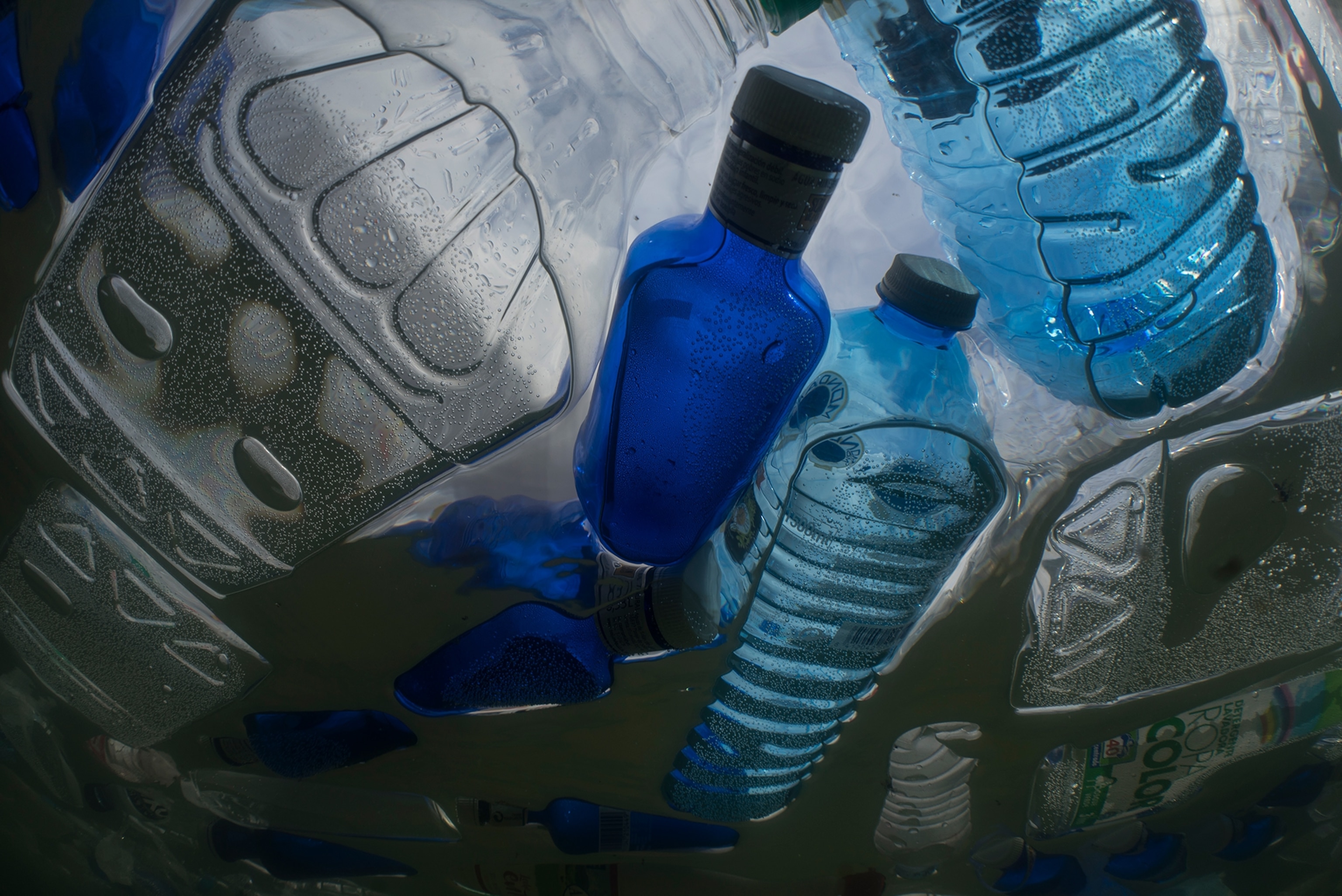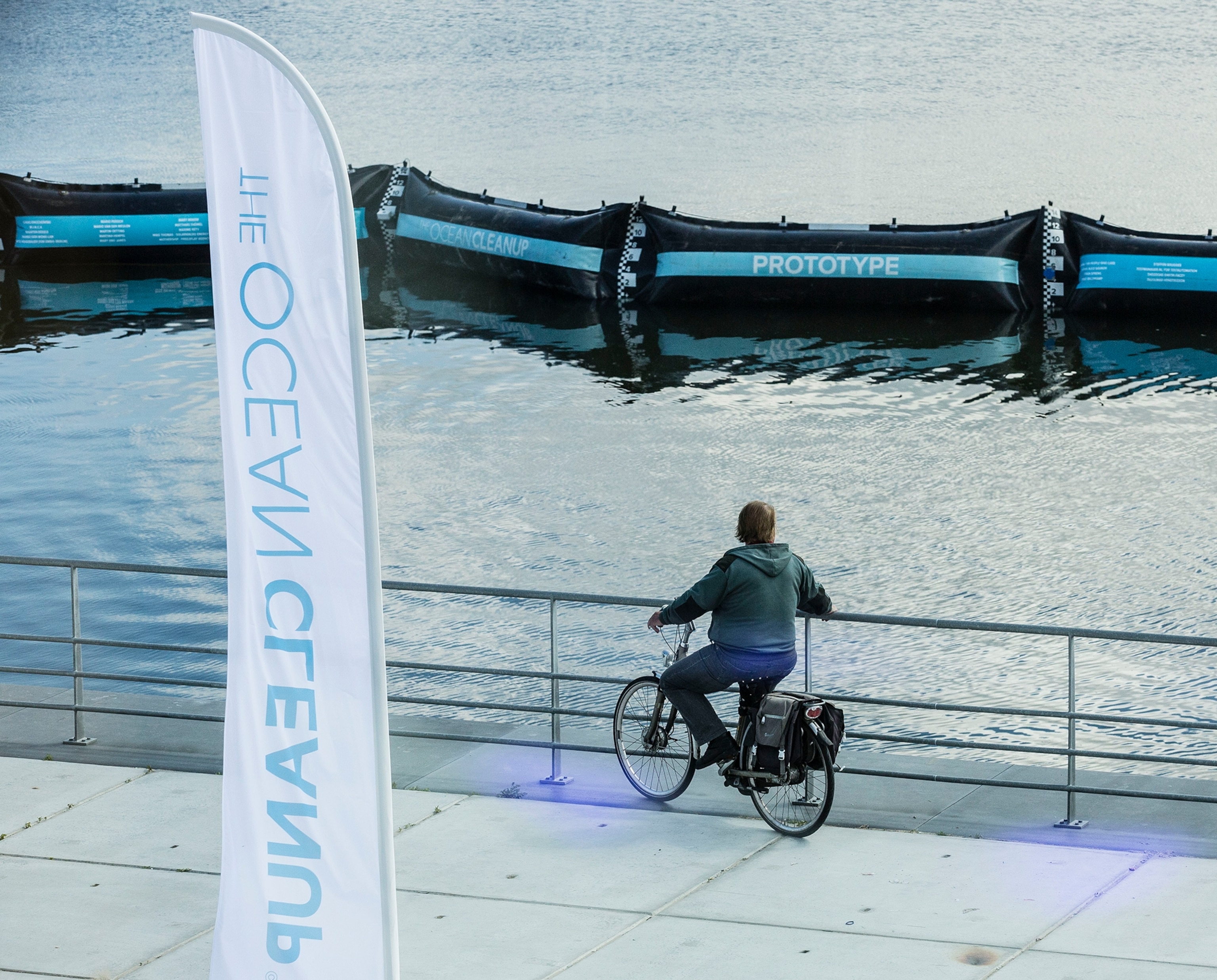Floating trash collector has setback in Pacific Garbage Patch
The Ocean Cleanup’s nearly 2,000-foot boom is collecting ocean plastics from the gigantic garbage gyre over the next year. But it has hit a snag.
The 2,000-foot boom, known as Wilson, is the creation of Boyan Slat, the Dutch entrepreneur who launched it last September for a year-long series of tests. “We are of course quite bummed about this,” Slat tweeted. “At the same time, we also realize that setbacks like this are inevitable when pioneering new technology at a rapid pace.” He described the setback as “teething troubles” that are “solvable.” He also vowed that ”the cleanup of the Great Pacific Garbage Patch will be operational in 2019.”
The campaign to rid the world’s oceans of plastic trash marked a turning point last September as a giant, floating trash-collector steamed out of San Francisco on a mission to clean up the Great Pacific Garbage Patch.
Over the course of the next year, the device will undergo the ultimate tests and face some tough questions: Can technology prevail over nature? Did the engineers at The Ocean Cleanup in the Netherlands invent the first feasible method for extracting large amounts of plastic debris from the sea? Or will the wilds of the open Pacific tear it to shreds, turning the cleaner itself into plastic trash? Alternately, even if a Pacific storm does not devour the device, will it attract marine animals such as dolphins and turtles and fatally entangle them?
“I don’t think it’s going to work, but I hope it does,” says George Leonard, the Ocean Conservancy’s chief scientist. “The ocean needs all the help it can get.”
The project is the creation of Boyan Slat, a 24-year-old Dutch college dropout who raised more than $30 million on a five-year quest to build an ocean-cleaning machine. His inspiration dates to a holiday diving trip in Greece he took as a teenager, where he encountered so much plastic, he decided to make cleaning up the ocean his mission. Back home in the Netherlands, he quit his aerospace engineering studies at the Delft University of Technology and founded the nonprofit Ocean Cleanup, where he is now CEO with a staff of 65 engineers and scientists.
The praise for Slat's effort so far has been lavish and the criticism harsh. He has won accolades from the King of Norway, a top environmental award from the United Nations, and his name appears on various lists, including one by Forbes magazine, of rising young entrepreneurial leaders. He has also been taken to task by scientists for under-estimating the potential risks to marine life the device will create.
Miriam Goldstein, director of ocean policy at the Center for American Progress, a liberal-leaning Washington think-tank, and a long-time critic of the project, says the cleaning device can mimic a fish aggregating device, known as FADs and used by fishermen to draw ocean-going fish to a central area where they can be easily caught. As fish congregate at the device, they could then attract marine animals and become entangled.
“Any time you have a floating object in the ocean of any reasonable size, fish like to congregate under it,” she says. “It’s definitely going to become a FAD. It’s not inherently bad for fish to gather, but it’s also not known what effect that will have.”
Cleanup or prevention?
More fundamentally, some say the project diverts attention away from what is regarded as a more cost-effective, consequential way to save the oceans—by preventing plastic trash from flowing into it in the first place.
“What’s floating on the surface of the ocean gyres is only three percent of the plastics that enters the ocean every single year,” says Eben Schwartz, marine debris program manager for the California Coastal Commission. “I understand why people are fascinated by this bright, shiny new object. But it’s sort of a digital solution to an analogue problem. The solution to plastic pollution entering our ocean starts on land.”
Schwartz and Leonard point to twinned annual beach cleanups on September 15 sponsored by the Ocean Conservancy, which conducts an international cleanup that last year collected 20.4 million pounds of trash in more than 100 nations, and the California Coastal Commission, which last year retrieved between 800,000 and 1 million pounds of trash from California beaches.
Slat, in an interview with National Geographic, reiterated his long-held view that prevention is the first step toward protecting the oceans.
“I think it should be clear that humanity can do more than one thing at a time,” he says. “But the plastic in the ocean is not going to go away by itself. We see plastic dating back to the 1960s and 1970s, so I think it’s obvious we have to do both. It’s not a hopeful situation if the only thing you can do is not make it worse.”
The Ocean Cleanup’s engineering team has been assembling the device in Alameda, California, for a year. On Saturday, it will be towed out into international waters off California for a final round of testing, and then towed to the garbage patch, arriving in mid-October for what is a planned year-long deployment.
Plastic trash accumulates in ocean gyres, which are large systems of circular currents. The Pacific Garbage Patch, which collects in the North Pacific Subtropical Gyre, is the largest and best-known assemblage of floating trash. It's more plastic soup than patch, however; there is no solid surface on which to stand. Most of it is made up of microplastics, plastics ground down into tiny bits by sunlight and wave action. Slat’s team of scientists say the garbage patch also contains an estimated 79,000 tons of abandoned fishing gear.
All in the design
Slat’s cleanup system has gone through several design changes. At first it was to be tethered to the ocean floor, but that scheme was scrapped in favor of the current design as a passive drifting system.
Physically, the device consists of a high-density polyethylene pipe 4 feet in diameter and 1,969 feet long. It will rest on the ocean surface in the shape of a U, with a screen skirt that hangs below the surface. It moves slowly through the water, driven by currents and winds, and can capture plastics on the surface, as well as debris almost 10 feet below the surface. If the device performs as designed, 60 additional booms will be deployed.
If everything goes as planned, it should collect 100,000 to 150,000 pounds of garbage in the first year. The full fleet of 60 devices—which will be larger—will collect more than 30 million pounds a year, Slat estimates.
The system is equipped with lights and an anti-collision system to prevent ships from running into it. Cameras, sensors, and satellites enable the project’s managers to direct it.
As plastic is collected, it will be picked up by a ship and transported back to California and then on to Europe to the Ocean Cleanup’s customers, Slat says.
“It is pretty exciting to see it come to life,” Slat says. “But we still have to do it and we’re just getting started. The moment I am looking forward most to is when we are taking the first plastic back and it’s proven technology. I am highly confident we have been able to eliminate every risk we can eliminate before going to the garbage patch. I feel pretty good about our chances of success.”
The remaining challenges, he says, are things that were hard to model. One is how much plastic will the system pick up? The Ocean Cleanup's stated goal is to clean up 50 percent of the garbage patch within five years.
“It’s nice there is a cleanup system, but if it doesn’t collect any plastic, it’s not very useful. So how efficient is the cleanup system and what’s the capture threshold and what’s the smallest piece we can collect? Within the first few months, we hope to get the answer to that all-important question,” says Slat.
The final challenge, he says, is survivability. The Ocean Cleanup’s engineers designed the device to survive a 100-year storm event. And the design change that allows waves to run through the system means that it won’t have to absorb the destructive energy of waves.
“Can it handle the worst conditions on the face of the planet? The ocean’s wind, waves, currents, salt, corrosion—all of these different destructive forces that are working against you. If by April we don’t sustain any significant damage, we can unpop a cork and celebrate,” Slat says.
This article was originally published on September 7, 2018, and updated on January 4, 2019 with news of the repairs made to the collector.




















